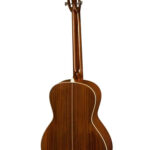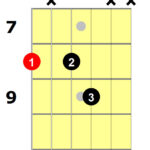After spending considerable time exploring the world of electro-acoustic guitars, I’ve gathered some insights that can significantly enhance your playing experience. For years, many guitarists, including myself, have sought a pure and simple acoustic tone, often gravitating towards traditional setups. However, electro-acoustic guitars offer a unique versatility, and understanding how to maximize their potential is key to unlocking truly great sound.
Here are some essential tips to consider for getting the best performance from your electro-acoustic guitar:
-
Optimize Your Amplification: Ensure you are using equipment that complements your electro-acoustic guitar. High-quality PA systems, acoustic amplifiers, or even studio monitors are designed to reproduce the nuanced tones of acoustic instruments accurately. While some may attempt to use electric guitar amps, you’ll find a more direct and satisfying path to great sound by using amplification specifically designed for acoustic instruments. It took me a while to appreciate this difference, but it’s crucial for truly enjoying the amplified sound of your electro-acoustic.
-
Don’t Rely Solely on Factory Presets: Many electro-acoustic amplifiers and DI boxes come with preset settings. However, these are often designed to showcase a wide range of features rather than providing immediately usable, refined tones. Experiment beyond the presets. While they can be a starting point, you’ll likely discover your ideal sound through some personalized tweaking.
-
Expand Your Understanding Beyond Just the Guitar: Think about your electro-acoustic setup holistically. Consider the entire signal chain, from your guitar’s pickup to the speakers. In the realm of electro-acoustics, this means understanding DI boxes, preamps, and acoustic amplifiers as components that shape your amplified tone. It’s a step beyond simply adjusting the knobs on your guitar, but exploring these elements opens up vast sonic possibilities if you’re willing to delve in.
-
Master Low and High Cuts: Understanding EQ, particularly low and high-frequency cuts, is a game-changer for electro-acoustic guitars. Properly applying these cuts can eliminate muddiness and harshness, often described as “boxy” or “thin” sounds, and significantly refine your tone. This understanding was a major breakthrough for me, helping to achieve a much cleaner and more natural acoustic sound.
-
Explore Online Resources for Acoustic Amp Settings: Just as electric guitarists share amp settings, the online community is full of valuable resources for electro-acoustic players. Search for videos and articles demonstrating settings for acoustic amplifiers and preamps. Many of these resources offer “recipes” for achieving specific acoustic tones, guiding you towards settings you might not have discovered on your own. These resources often illustrate best practices, such as typical signal chain order (pickup/guitar -> preamp/DI -> EQ -> effects -> amplification). While there are numerous parameters to adjust, you’ll quickly identify the most impactful ones for your desired sound. Using a laptop or tablet to visualize settings while referencing online guides can significantly speed up your tone-shaping process.
-
Prioritize Playing and Performing: Remember that the ultimate goal is to make music. While refining your tone is important, it’s easy to get lost in endless tweaking. Regularly playing along with backing tracks, jamming with other musicians, or performing live is the quickest way to shift your focus from obsessing over sound to enjoying the musical experience itself.
If you take away just two things, focus on point 1 and point 6.
Alternatively, for a straightforward path to pleasing electro-acoustic tone, start with a quality acoustic DI box or preamp, add a touch of reverb, and you’ll likely find yourself very satisfied.
Consider also exploring acoustic Impulse Responses (IRs). While primarily used for emulating acoustic guitar body resonances in electric guitars, they can also be incredibly effective in enhancing the realism and body of amplified electro-acoustic guitars, offering another avenue to refine your sound.
Good luck in your electro-acoustic journey!


